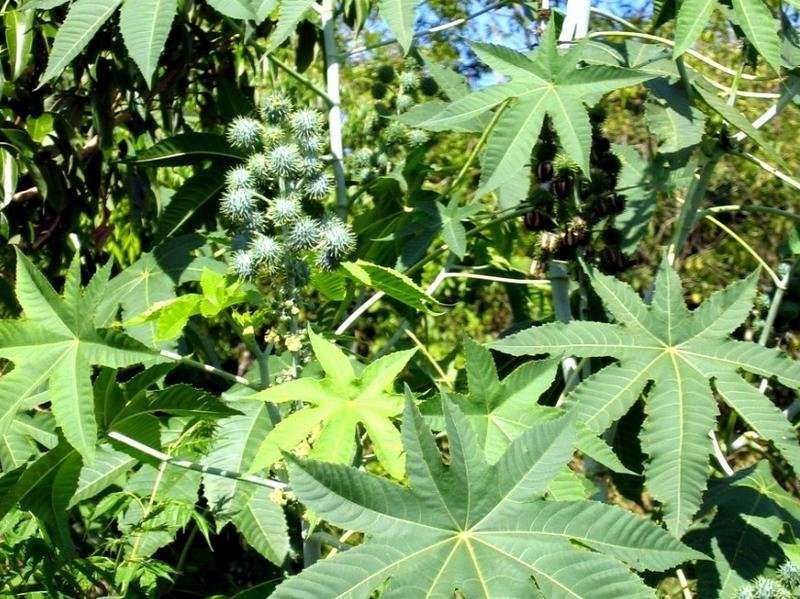The genome of vascular plants bears witness to the evolution of viruses of the family Caulimoviridae

Endogenous viral elements are viral sequences integrated into the nuclear genome of their host. They are veritable molecular fossils that prove infections that may have happened millions of years ago, and studying them can serve to understand how viruses evolve over time.
As part of an international collaboration, researchers from CIRAD and INRA looked into the endogenous elements of viruses of the family Caulimoviridae, which cause numerous infections in plants. They studied the genome of plants to assess the diversity of those viruses and their host spectrum.
Endogenous viral elements in vascular plants, from lycopods to flowering plants
The scientists used the most advanced genomics and bioinformatics tools to analyse the genome of 72 plants representative of the different phylogenetic groups characterized to date—from green algae to flowering plants -, to look for all or part of the sequences that code for a viral protein of the family Caulimoviridae that is both specific and highly conserved, retrotranscriptase. While the presence of such sequences was known in the genome of flowering plants, they also found some in most vascular plants, including the most primitive plants—ferns, conifers and lycopods -, a result that illustrates the capacity of Caulimoviridae to infect a wide, previously underestimated range of hosts. Of the 62 flowering plant species studied, it appeared that the number of endogenous Caulimoviridae was correlated with the size of the genomes, with thousands of sequences at the heart of the giant genomes of gymnosperms, and notable exceptions: the maize (Zea mays ) genome did not have any despite its size. On the other hand, the density was remarkably high in castor (Ricinus communis ) and orange (Citrus sinensis ).
An in-depth analysis of the endogenous viral elements identified in the plants studied revealed that most of the endogenous Caulimoviridae came from the genera Florendovirus and Petuvirus. It also led to the discovery of previously unknown evolutionary branches of Caulimoviridae : four new genera of the family Caulimoviridae were detected in conifers (Gymnendovirus 1 to 4), two in ferns (Fernendovirus 1 and 2) and five in flowering plants (eg Xendovirus or Yendovirus).
Endogenous viral elements dating back to the Devonian period
Based on an analysis of the distribution of different viral genera of the family Caulimoviridae in the plant species studied, the scientists were able to propose an evolutionary scenario in which this virus family apparently emerged in an ancestor shared by flowering plants and gymnosperms during the Devonian period (- 320 million years). There were apparently subsequent exchanges between hosts belonging to different divisions. It is worth noting that the large host spectrum of viruses in the family Caulimoviridae may be due to the presence in these viruses of a movement protein that facilitates the transport and circulation of viral particles between the cells via specific channels, or plasmodesmata, whose structure is characteristic of vascular plants.
These results prove the substantial adaptability of viruses of the family Caulimoviridae and their influence on the evolution of vascular plants. They call for a more detailed study of the role and consequences of the presence of these viruses in the genome of plants.
Caulimoviridae in a nutshell
The family Caulimoviridae comprises plant viruses. It includes eight genera (Badnavirus, Caulimovirus, Cavemovirus, Petuvirus, Rosadnavirus, Soymovirus, Solendovirus and Tungrovirus) , to which a ninth, Florendovirus, was recently added.
Certain members of the family Caulimoviridae cause significant economic losses, notably in tropical regions, where they affect rice (rice tungro bacilliform virus or RTBV), cocoa (cocoa swollen shoot virus or CSSV), cassava, banana, and other major crops.
It is worth mentioning that cauliflower mosaic virus (or CaMV) is an important model virus that enabled an understanding of the fundamental aspects of various viral processes (replication, cell-to-cell movements, transmission, etc). Certain elements of its genome are now also widely used in the plant biotechnology field, to explore the functions of certain plant genes.
More information: Seydina Issa Diop et al. Tracheophyte genomes keep track of the deep evolution of the Caulimoviridae, Scientific Reports (2018). DOI: 10.1038/s41598-017-16399-x
Journal information: Scientific Reports
Provided by CIRAD





















